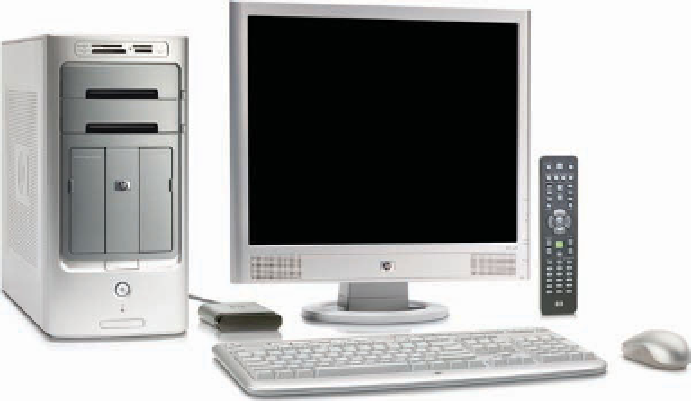Information Technology Reference
In-Depth Information
Input Devices
You can use hundreds of devices for data entry and input. They range from special-purpose
devices that capture specific types of data to more general-purpose input devices. Some of
the special-purpose data entry and input devices are discussed later in this chapter. First, we
focus on devices used to enter and input general types of data, including text, audio, images,
and video for personal computers.
Personal Computer Input Devices
A keyboard and a computer mouse are the most common devices used for entry and
input of data such as characters, text, and basic commands. Some companies are developing
keyboards that are more comfortable, more easily adjusted, and faster to use than standard
keyboards. These ergonomic keyboards, such as the split keyboard by Microsoft and others,
are designed to avoid wrist and hand injuries caused by hours of typing. Other keyboards
include touchpads that let you enter sketches on the touchpad and text using the keys.
Another innovation is wireless mice and keyboards, which keep a physical desktop free from
clutter.
You use a computer mouse to point to and click symbols, icons, menus, and commands
on the screen. The computer takes a number of actions in response, such as placing data into
the computer system.
A keyboard and mouse are two of the
most common devices for computer
input. Wireless mice and keyboards
are now readily available.
(Source: Courtesy of Hewlett-
Packard Company.)
Speech-Recognition Technology
Using
speech-recognition technology
, a computer equipped with a source of speech input
such as a microphone can interpret human speech as an alternative means of providing data
or instructions to the computer. The most basic systems require you to train the system to
recognize your speech patterns or are limited to a small vocabulary of words. More advanced
systems can recognize continuous speech without requiring you to break your speech into
discrete words. The U.S. Department of Defense awarded $49 million to Johns Hopkins
University to set up and run a Human Language Technology Center of Excellence to develop
advanced technology and analyze a wide range of speech, text, and document image data in
multiple languages. According to Gary Strong, the executive director of the center, “We need
a better way to sort, filter, interpret, and call attention to important material that's buried
within the enormous amount of multilingual data being produced every day in other nations.
The government does not have nearly enough people with the multiple language skills needed
to review this material. We need to develop technology to help.”
34
Companies that must constantly interact with customers are eager to reduce their cus-
tomer support costs while improving the quality of their service. One company, Dial
Directions, offers a free cell phone direction service. Users dial 347-328-4667 and tell the
voice-activated service their originating location and desired destination and receive instant
text messages with MapQuest driving directions on their cell phone.
35
speech-recognition technology
Input devices that recognize human
speech.


